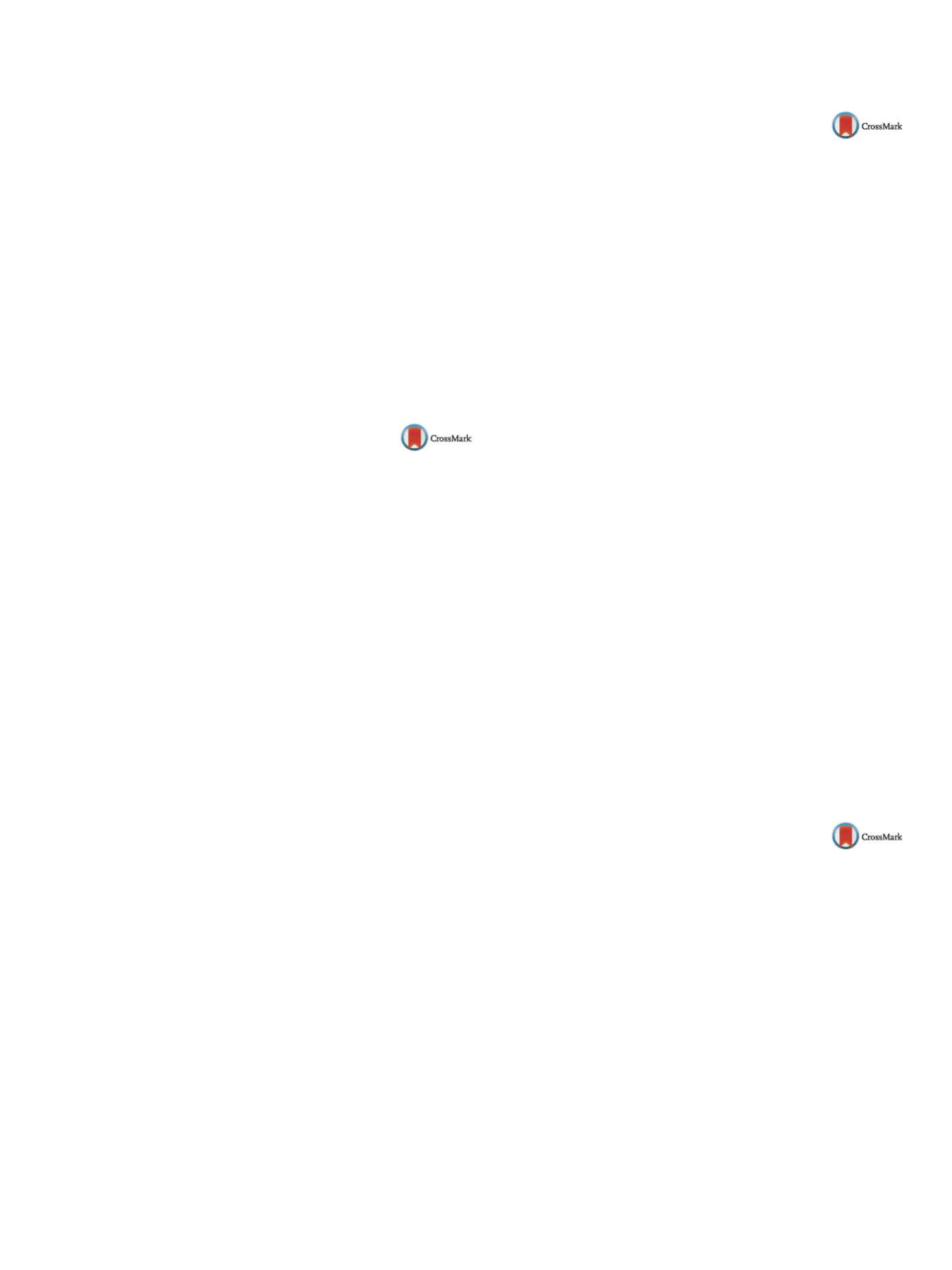

25th European congress of psychiatry / European Psychiatry 41S (2017) S365–S404
S395
and nonusers. Outcome was evaluated through urine controls, con-
sidering a poor outcome when positive to heroin > 20%.
Results
Of the 76 patients in MMT, the average age was 40 years,
21%werewomen, mean dosage of methadonewas 48.2mg/day and
more than a half were DCR users (52.63%). Of the 40 patients, which
formed the DCR user subgroup, the average age was 36.4 years, 20%
were women and mean dosage of methadone was 47mg/day. The
outcome of all the patients in PMM was successful in 48.68% of
the cases, presenting differentially the nonusers a 91.67% of good
response and the users only a 10%.
Conclusions
Inclusion of a drug consumption room in an out-
patient treatment center for alcoholism and drug abuse, which
facilitates accessibility for people who inject drugs to treatment,
poses new challenges in order to improve the effectiveness of the
PMM.
Disclosure of interest
The authors have not supplied their decla-
ration of competing interest.
http://dx.doi.org/10.1016/j.eurpsy.2017.02.451EW0838
U-47700: The new emerging opioid
drug
D. Sanagustin Bosqued
∗
, M. De Dios Felis ,
E. Monteagudo Gimeno , S. Pérez Gonzaléz , A. Trabsa Biskri ,
L. Galindo Guarin , M. Grifell Guardia , P. Quintana Mathe ,
M. Torrens Melich
Institut de Neuropsiquiatria i Adiccions, Psychiatry, Barcelona, Spain
∗
Corresponding author.
Introduction
The trans-3;4-dichloro-N-(2-(dimethylamine)
cyclohexyl) labelled as U-47700 has a high affinity with the selec-
tive receptor, considered to have 7.5 times the binding affinity of
morphine; as a result, it is sold as a recreational drug because of
its analgesic and euphoric effects. Several toxicity cases and some
fatalities have been reported during 2016.
Objectives
To describe the presence of trans-3;4-dichloro-N-
(2-(dimethylamine) cyclohexyl) in samples delivered to Energy
Control during 2016 in Barcelona.
Methods
From January 2016 to October 2016, 4031 samples
were delivered and only those samples containing trans-3;4-
dichloro-N-(2-(dimethylamine) cyclohexyl) were studied, 6 of
them were analysed as U-47700 (0.148%). Samples were anal-
ysed by energy control, a Spanish harm-reduction NGO that offers
users the possibility of analysing the substances they intend
to consume. Analysis was done by gas chromatography–mass
spectrometry.
Results
From the 6 samples that were analysed as trans-3;4-
dichloro-N-(2-(dimethylamine) cyclohexyl), the presentation of 4
of them was white powder and the rest were not described. The
procedence of the samples was Canada (2), USA (1), Sweden (1),
Holland (1) and the remaining sample was not described. All sam-
ples were received during 2016.
Conclusions
The
use
of
trans-3;4-dichloro-N-(2-
(dimethylamine)cyclohexyl) is progressively increasing in
Barcelona. Its harmful effects are being reported in recent
medical literature and consumption represents an emerging
issue, gaining popularity among recreational opioid users. It is
potentially lethal when mixed with depressants like alcohol or
benzodiazepines and overdose risk is higher compared to other
opioids. This drug is not being detected by routine in medical
test.
Disclosure of interest
The authors have not supplied their decla-
ration of competing interest.
http://dx.doi.org/10.1016/j.eurpsy.2017.02.452EW0839
Substance use and quality of life in
young adult psychiatric patients
J. Silva Ribeiro
∗
, S. Morais , P. Oliveira , O. Mendes , A. Botelho ,
L. Vale , A. Bessa , P. Renca , V. Santos , N. Madeira
Centro Hospitalar e Universitário de Coimbra, Centro de
Responsabilidade Integrado de Psiquiatria e Saúde Mental, Coimbra,
Portugal
∗
Corresponding author.
Introduction
It is known that several factors can influence the
quality of life such as age, gender, socioeconomic status, the pres-
ence of mental illness or substance abuse.
Objectives/aims
Assess quality of life of outpatients observed in
Young Adult Unit of our Psychiatry Department (Coimbra Hospital
and University Centre – Portugal) and its relation with substance
use.
Methods
Socio-demographic characterization of youth psychi-
atric outpatients observed during between 1st January 2015 and
31st July 2016. Portuguese versions of The Alcohol, Smoking and
Substance Involvement Screening Test (ASSIST) and The World
Health Organization Quality of Life scale (WHOQOL-BREF) were
administered. A Spearman correlation coefficient between ASSIST
and WHOQOL-BREF scores was calculated.
Results
A total of 255 outpatients were observed: 64.3% females
and 35.7% males; ages between 17 and 39 years old. ASSIST and
WHOQOL-BREF were administered in 57 patients. Average ASSIST
total score was 16.81 (median: 13.50), with tobacco and alcohol
scoring higher. Average WHOQOL-BREF total was 13.74 (median:
13.67), with physical and psychological domains scoring less.
We found a significant negative correlation between WHOQOL-
BREF physical domain and ASSIST tobacco scores; and between
WHOQOL-BREF social domain and ASSIST sedatives score.
Conclusions
Quality of life is influenced by several factors. Stud-
ies showed that consumers of psychoactive substances have lower
WHOQOL-BREF scores than nonusers. In our sample, we did not
find a significant correlation between global quality of life and dif-
ferent substances. Thismay be due to existence of lowconsumption
of substances in the sample as well as the existence of other factors
that might have influenced quality of life.
Disclosure of interest
The authors have not supplied their decla-
ration of competing interest.
http://dx.doi.org/10.1016/j.eurpsy.2017.02.453EW0840
Efficiency of Cocarnit preparation in
clinical course of alcohol dependence
at withdrawal syndrome stage
I. Sosin
1 ,∗
, O. Goncharova
2, Y. Chuev
21
Kharkov Medical Academy of Postgraduate Education, Narcology,
Kharkov, Ukraine
2
Kharkiv Medical Academy of Postgraduate Education, Narcology,
Kharkiv, Ukraine
∗
Corresponding author.
Introduction
Recently scientific attention of Ukrainian narcology
was focused on the group of new complex pharmacological prepa-
rations with polymodal pathogenic effect option (Cocarnit, World
Medicine, Great Britain).
Aims and objectives
To ground feasibility of Cocarnit application
in complex treatment of alcohol withdrawal syndrome (AWS).
Method
Eleven patients with alcohol addiction were exam-
ined. An integrated research of relieving and adjuvant effects of
pharmacological preparation Cocarnit in complex with traditional
detoxication therapy in clinical course of alcohol dependence at
AWS stage was carried out. One to 2 ampoules of Cocarnit were
injected intramuscularly once per 24 hrs,
№
6.


















